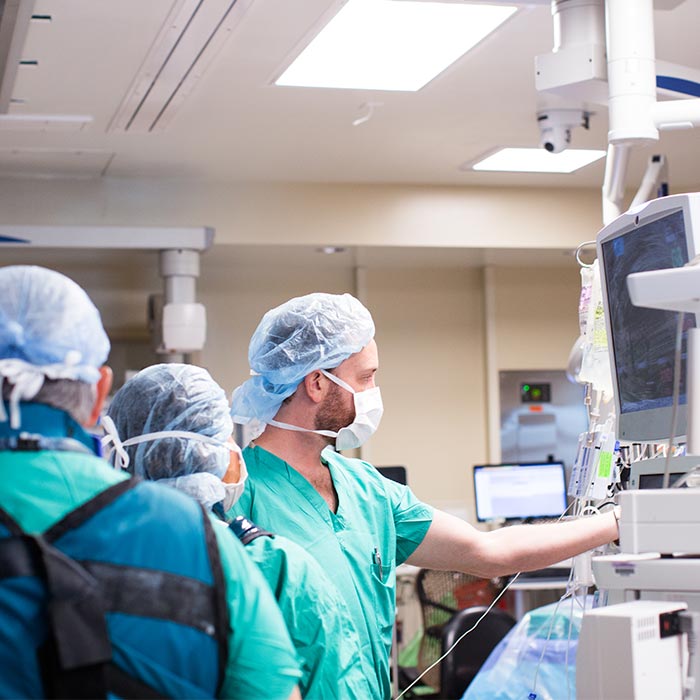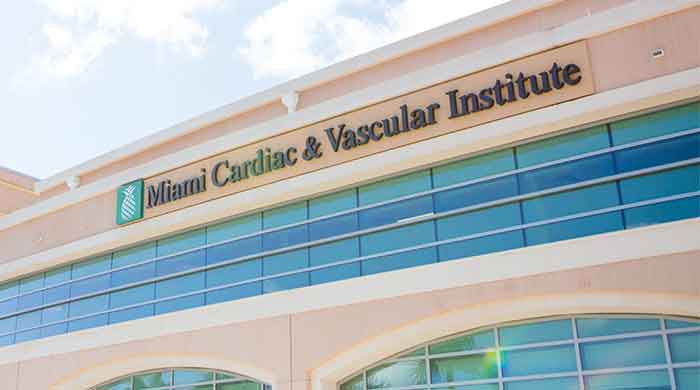No bounds. Better healthcare.
Using clinical data to drive operational efficiency
Philips improves efficiency and increases productivity in Miami Cardiac & Vascular Institute Cath lab
Hospital executives are faced with the task of managing throughput, saving costs and driving efficiency at a time when patients are arriving in larger numbers and with complex disease profiles. “In the United States, patients end up using the emergency room as their primary care source, so we see a lot of patients coming in with many diseases and many clinical issues,” says Carol Melvin, Chief Operating Officer at Miami Cardiac & Vascular Institute. “Those patients need to be treated in a timely fashion. That can be a challenge.”
Productivity and efficiency
Tasked with delivering the highest-quality and most technologically advanced care in the face of increased cost pressures requires rigorous efficiency in the daily operations of the organization. In value-based, outcome-driven healthcare systems, where reimbursements are not increasing but the complexity of patients’ diseases and the resources needed to treat them are, efficiency is vitally important for hospitals. “Normally we don’t see a patient until they have a problem, and normally patients don’t seek out care in a preventative way,” says Ms. Melvin. “From a clinical standpoint, we need to know what resources we need to treat those patients at the stage of cardiovascular disease they have when they arrive at our facility. Being able to provide that care in a cost-effective way can be a challenge when the patients are very sick and are very complicated.” Part of the COO’s role is focusing on the day-to-day operations of the organization – increasing productivity and efficiency and managing logistics. For the Institute, it begins with identifying how resources are being used and how time is being managed. The inventory that is part of a minimally invasive cardiac procedure is rich with data that can inform key clinical and business decisions. Turning that data into meaningful insights is part of Ms. Melvin’s job. “It’s really necessary, for a very strong team approach among staff, physicians and leadership, to determine how we can manage our costs but still provide outstanding quality care and provide the best outcomes,” she adds.
Creating a competitive advantage
At the Institute, data from a minimally invasive procedure is aggregated through Philips Xper Information Management, a cardiovascular information system (CVIS). Philips XperIM not only tracks a patient’s hemodynamics during a procedure, but it also acts as an Electronic Medical Records (EMR) system, which collects data related to the procedure and documents the components of the procedure. For example, you can see how long each procedure takes, how long it takes the Institute to prep the patients, how long it takes the Institute to get the patient out of the room and turn the rooms around for the next patient. “That data is extremely important when it comes to looking at utilization related to equipment. So, this allows us to know which rooms are being utilized the most, and provides us with information that could allow us to justify either changing a room for a particular need, or expanding and adding additional rooms,” says Ms. Melvin. “It provides that efficiency and productivity data which not many organizations have available to them, and that’s why I think that the Xper Information Management, system has given us an advantage as an organization in looking at how well we manage our departments.”
Using meaningful data
Inventory and resources used in the procedure are also managed through the Xper system – each piece of equipment used is scanned during the procedure, and the Institute is able to track the cost per procedure on various aspects. “I can understand the cost associated with a particular procedure or particular physician, and that’s important data as we move forward,” says Ms. Melvin. In the past, the only way data was captured was manually – through log sheets and monthly updates – or not at all. The large volumes of data created in hospitals today doesn’t necessarily make this challenge any easier, if the data is not organized in a way that can make decision making easy. “I can collect lots of different data points, but if those data points aren’t meaningful in a way that’s going to allow us to improve or enhance the way that we provide the care, then it’s pointless data,” Ms. Melvin says.
Less invasive.
Shorter stays.
A customer story from Miami Cardiac & Vascular Institute
I can understand the cost associated with a particular procedure or particular physician, and that's important data as we move forward."
COO of Miami Cardiac & Vascular Institute
Carol Melvin


Learn more about Philips IntelliSpace Cardiovascular
No bounds.
Better healthcare.
There's always a way to make life better.

DISCLAIMER: Results are specific to the institution where they were obtained and may not reflect the results achievable at other institutions.


